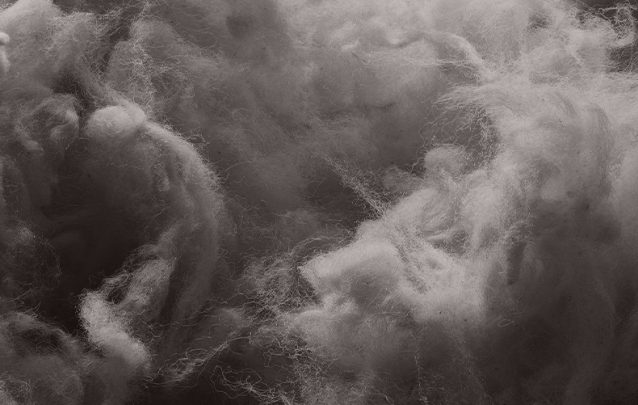The Story of Shetland Wool and What Makes It So Special
11 October 2021
The story of the Shetland sheep goes back as far as 4500 years ago when Shetland’s early farmers grazed small flocks. These sheep were slightly larger than the Soay breed and did not have fleece as we know it today. They were small, agile, and hardy, surviving well under challenging environments and climates, still seen in today’s Shetland breed.
Shetlanders began using their sheep for making textiles around 500 BC. By the 5th and 9th Centuries, Norwegian and Viking settlers had joined the native Shetland population. The new Shetlanders influenced the Shetland breed by crossing them with other short-tailed Scandinavian sheep, making the wool longer, the fleeces heavier, and possibly introduced the greater range of colour for which the Shetland breed is well known today.
It was not long until the total number of sheep on Shetland far outnumbered the human population. One of the Shetland Islands’ most important commodities was realised, Real Shetland Wool.
Careful breeding was not the only method to obtain high-quality wool grown on the Shetland Islands. Early crofters noticed there was much more to create the perfect fleece; survivability, adaptability, ease of care, and the amount of meat they needed were all crucial.
Shetland is a subarctic archipelago around 130 miles north of mainland Scotland, somewhat isolated out in the North Sea. The sheep that roam Shetland’s open hills and shorelines are exposed to the elements all year round, from warm summers to cold, snowy winters with little shelter beyond cliff faces, caves, and crevices. As such, the sheep living here evolved a fleece that could deal with the changing seasons.
Traditional Shetland wool has an obvious, unique crimp that gives a lot of elasticity to the fibre and loft, unique to Shetland. The crimp makes the wool very suitable for yarns and woven goods, whereas the loft creates volume in knitwear while remaining lightweight, giving the wool unique insulation properties. The overall handle is soft, and the sheep grows a decent weight of wool for its size over the year. Hand spinners enjoy using the fibre in its greasy form to make custom yarns, and textile manufacturers found the short-staple length perfect for making woollen yarns suited for knitwear and tweed fabrics. The well-known quality of Shetland wool in textiles has seen the fibre make its mark on the history books; from being a favoured fibre for Viking longboat sails, traditional fishermen’s jumpers, and Shetland Tweed to specialist climbing apparel for the famed Sir Edmund Hillary and his Everest expeditions in 1953.
Throughout all this time, though, Shetland wool has always been highly regarded by hand spinners and knitters. Traditional yarns made for Shetland lace and Fair Isle knitting have remained some of the most popular for generations of knitters, not just local to Shetland but those all over the world!
Shetlanders began using their sheep for making textiles around 500 BC. By the 5th and 9th Centuries, Norwegian and Viking settlers had joined the native Shetland population. The new Shetlanders influenced the Shetland breed by crossing them with other short-tailed Scandinavian sheep, making the wool longer, the fleeces heavier, and possibly introduced the greater range of colour for which the Shetland breed is well known today.
It was not long until the total number of sheep on Shetland far outnumbered the human population. One of the Shetland Islands’ most important commodities was realised, Real Shetland Wool.
Careful breeding was not the only method to obtain high-quality wool grown on the Shetland Islands. Early crofters noticed there was much more to create the perfect fleece; survivability, adaptability, ease of care, and the amount of meat they needed were all crucial.
Shetland is a subarctic archipelago around 130 miles north of mainland Scotland, somewhat isolated out in the North Sea. The sheep that roam Shetland’s open hills and shorelines are exposed to the elements all year round, from warm summers to cold, snowy winters with little shelter beyond cliff faces, caves, and crevices. As such, the sheep living here evolved a fleece that could deal with the changing seasons.
Traditional Shetland wool has an obvious, unique crimp that gives a lot of elasticity to the fibre and loft, unique to Shetland. The crimp makes the wool very suitable for yarns and woven goods, whereas the loft creates volume in knitwear while remaining lightweight, giving the wool unique insulation properties. The overall handle is soft, and the sheep grows a decent weight of wool for its size over the year. Hand spinners enjoy using the fibre in its greasy form to make custom yarns, and textile manufacturers found the short-staple length perfect for making woollen yarns suited for knitwear and tweed fabrics. The well-known quality of Shetland wool in textiles has seen the fibre make its mark on the history books; from being a favoured fibre for Viking longboat sails, traditional fishermen’s jumpers, and Shetland Tweed to specialist climbing apparel for the famed Sir Edmund Hillary and his Everest expeditions in 1953.
Throughout all this time, though, Shetland wool has always been highly regarded by hand spinners and knitters. Traditional yarns made for Shetland lace and Fair Isle knitting have remained some of the most popular for generations of knitters, not just local to Shetland but those all over the world!
